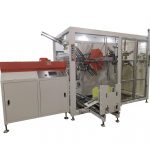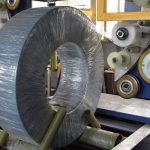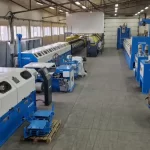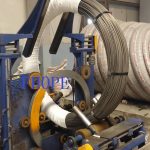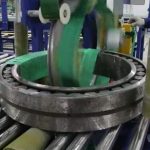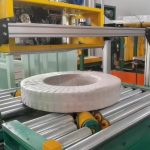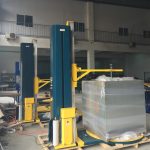Manual vs. Automated Packaging: The Future of the Steel Coil Industry
- Manual vs. Automated Packaging: The Future of the Steel Coil Industry
- 1. The Importance of Packaging in the Steel Coil Industry
- 2. What is Manual Packaging?
- 3. Advantages of Manual Packaging
- 4. The Drawbacks of Manual Packaging
- 5. What is Automated Packaging?
- 6. Benefits of Automated Packaging
- 7. Drawbacks of Automated Packaging
- 8. Comparing Costs: Manual vs. Automated Packaging
- 9. How Automation Improves Scalability
- 10. Impact of Automation on Workforce
- 11. Environmental Benefits of Automated Packaging
- 12. Case Studies: Successful Transition to Automated Packaging
- 13. The Future of Packaging in the Steel Coil Industry
- 14. Conclusion: Is Automated Packaging the Future?
The packaging of steel coils is a vital part of the manufacturing and logistics processes. As the steel coil industry evolves, companies are increasingly looking for ways to optimize operations and cut costs. One of the most significant shifts in this area is the move from manual to automated packaging. But what does this transition mean for businesses? Is automated packaging really the future, or is there still a place for manual methods in certain situations? This article will explore the differences between manual and automated packaging, highlighting the pros and cons of each and what the future may hold for the steel coil industry.
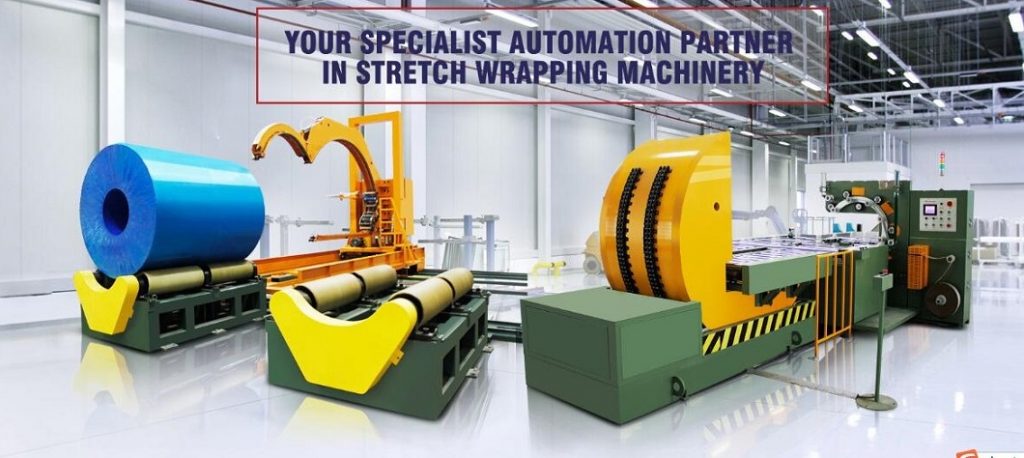
1. The Importance of Packaging in the Steel Coil Industry
Before diving into the debate between manual and automated packaging, it’s essential to understand why packaging is so critical in the steel coil industry. Steel coils are large, heavy, and often stored or transported long distances. Proper packaging ensures the coils are protected from damage, rust, and other environmental factors, such as moisture. Packaging also impacts logistics, as well-packaged coils are easier to handle, stack, and transport safely.
2. What is Manual Packaging?
Manual packaging refers to the traditional way of wrapping and securing steel coils by hand. Workers use tools like straps, stretch film, and wrapping machines operated manually to protect the steel coils. This method requires a significant amount of human labor and involves physical handling of the coils, often by multiple employees.
3. Advantages of Manual Packaging
While automated systems are gaining popularity, there are several advantages to sticking with manual packaging, particularly for smaller companies or those with limited production volumes.
- Cost-Effective for Small Operations: For businesses that don’t deal with massive quantities of steel coils, the investment in an automated system may not be justifiable. Manual packaging can be done with minimal upfront costs, as it primarily relies on labor.
- Flexibility: Manual packaging can be more flexible, especially when dealing with coils of different sizes or special packaging needs. Workers can easily adjust the process to accommodate unusual requirements without needing specialized equipment.
- Control Over Packaging Quality: When skilled workers handle the packaging process, they can ensure a high level of care and attention to detail. This might be essential for customers requiring custom packaging solutions or for coils with specific handling requirements.
4. The Drawbacks of Manual Packaging
However, manual packaging is not without its challenges, especially when considering the long-term efficiency and scalability of operations.
- Labor-Intensive: One of the most significant drawbacks is the high demand for labor. Packing steel coils is physically demanding, and manual methods may lead to worker fatigue, injuries, and occupational hazards.
- Inconsistent Packaging Quality: With manual labor, there's a risk of inconsistent packaging quality. Workers might vary in their methods or attention to detail, leading to discrepancies in how well-protected the steel coils are.
- Slower Production Rates: Manual packaging processes can significantly slow down the production line, especially for companies dealing with large volumes. The time required to wrap, strap, and secure each coil adds up, reducing overall efficiency.
5. What is Automated Packaging?
Automated packaging systems use advanced machinery and technology to handle the entire process of wrapping, securing, and preparing steel coils for transportation. These systems can handle large quantities of coils, operate at high speeds, and minimize the need for human intervention.
Automated packaging solutions typically involve a combination of machines, including coil wrapping machines, strapping machines, and automated conveyors. These systems are designed to work seamlessly to wrap, secure, and move steel coils through the packaging process without the need for constant manual input.
6. Benefits of Automated Packaging
Many companies in the steel coil industry are now investing in automated systems due to the numerous advantages they offer over manual methods.
- Increased Efficiency: One of the most obvious benefits of automated packaging is the significant increase in efficiency. Automated systems can work around the clock, packaging coils at a much faster rate than any manual team could achieve. This leads to higher productivity, reduced downtime, and the ability to meet higher demand.
- Consistent Packaging Quality: Unlike manual processes, automated systems ensure a uniform and consistent packaging quality across all coils. This is particularly important for companies with strict quality standards or customers who expect consistent results.
- Reduced Labor Costs: Although the initial investment in an automated system can be high, the long-term savings on labor costs can be substantial. Fewer workers are needed to operate and oversee the machines, reducing the overall staffing requirements.
- Enhanced Safety: Automated packaging minimizes the need for workers to handle heavy coils, thereby reducing the risk of workplace injuries and improving overall safety. In a high-risk industry like steel manufacturing, this is a crucial benefit.
7. Drawbacks of Automated Packaging
While the benefits of automated packaging are compelling, it’s essential to consider the drawbacks, especially for smaller operations or those without the capital to invest heavily in automation.
- High Initial Investment: The upfront cost of purchasing and installing an automated system can be prohibitive for smaller companies. Machines, maintenance, and the necessary infrastructure require significant capital expenditure.
- Complex Maintenance Requirements: Automated systems require regular maintenance and occasional repairs, which may necessitate hiring specialized technicians. This can increase operational costs and downtime if the machines are not properly maintained.
- Less Flexibility: Automated systems are designed to handle specific coil sizes and packaging processes. This means they may not offer the same level of flexibility as manual methods, particularly when dealing with custom orders or unique coil specifications.
8. Comparing Costs: Manual vs. Automated Packaging
When evaluating the transition from manual to automated packaging, one of the most critical considerations for any business is cost. It’s essential to weigh both the short-term and long-term expenses associated with each method.
- Manual Packaging Costs: As mentioned earlier, manual packaging often involves lower upfront costs because it primarily relies on human labor and basic tools. However, over time, these costs can accumulate due to the need for a large workforce, the risk of injuries (which can lead to worker's compensation claims), and slower productivity rates. In industries that operate on a 24/7 schedule, manual packaging can become particularly costly as shifts increase.
- Automated Packaging Costs: While the initial cost of purchasing and installing an automated system is much higher, this investment often pays off over time through reduced labor costs and increased efficiency. Additionally, automated systems tend to have lower error rates, leading to fewer damaged coils and returns, which can save businesses money in the long run. Companies must also factor in maintenance and training costs for operating and maintaining these machines.
9. How Automation Improves Scalability
One of the significant advantages of automated packaging in the steel coil industry is its ability to scale with business growth. As demand for steel coils increases, so does the need for faster, more efficient packaging processes. Automated systems are uniquely suited to handle larger volumes without compromising on quality or safety.
- Seamless Adaptation to Increased Demand: Automation allows businesses to adapt quickly to increasing production volumes. Automated packaging machines can operate continuously, making it possible to meet high demands without the need to hire additional labor. This is a crucial advantage in an industry where production volumes can fluctuate depending on market demand.
- Reduced Bottlenecks: Manual packaging can often become a bottleneck in the production process, especially when orders increase. Automated systems eliminate this bottleneck by significantly speeding up the packaging process, ensuring that coils move quickly and efficiently from production to shipment.
10. Impact of Automation on Workforce
One of the primary concerns many businesses face when considering automation is the impact it will have on their workforce. While automation certainly reduces the need for manual labor, it doesn’t necessarily mean job losses. Instead, it creates an opportunity for the workforce to shift toward more specialized, higher-skilled roles.
- New Job Opportunities: Automated packaging systems require operators, technicians, and maintenance personnel. These are often higher-paying jobs that require more technical expertise. By investing in the proper training, companies can upskill their current workforce to fill these roles.
- Reduced Physical Strain: For workers who are currently involved in manual packaging, automation can significantly reduce the physical demands of their jobs. Workers can focus on monitoring and supervising machines rather than engaging in labor-intensive tasks that can lead to injuries over time.
- A Balanced Workforce: Many companies find that automation allows them to strike a balance between labor and technology. Rather than entirely replacing workers, automation enables businesses to optimize their workforce by assigning human workers to tasks that require critical thinking and leaving repetitive, manual tasks to machines.
11. Environmental Benefits of Automated Packaging
Another often-overlooked advantage of automated packaging is its potential impact on sustainability. As industries face increasing pressure to reduce their environmental footprint, automated packaging can offer several eco-friendly benefits.
- Reduced Waste: Automated packaging systems are highly precise, using the exact amount of material needed to wrap and secure each steel coil. This minimizes the waste associated with over-packaging, which can be a problem with manual methods where workers may use excessive materials to ensure protection.
- Energy Efficiency: Modern automated packaging machines are designed with energy efficiency in mind. Many systems are equipped with energy-saving features that reduce power consumption during operation, contributing to lower overall energy usage in the production process.
- Fewer Resources Needed: By reducing the need for manual labor and streamlining the packaging process, automation can also reduce the resources required to run a packaging operation. This includes everything from fewer employees on the production floor to less packaging material waste.
12. Case Studies: Successful Transition to Automated Packaging
Many companies in the steel coil industry have already made the switch to automated coil packaging with impressive results. Let's explore a few real-world examples of how automation has transformed operations.

- Case Study 1: Steel Coil Manufacturer in Europe: This company was struggling with high labor costs and inconsistent packaging quality. After implementing an automated packaging system, they saw a 30% increase in productivity and reduced their packaging-related labor costs by 40%. Additionally, the system provided consistent packaging quality, leading to fewer damaged coils during transportation.
- Case Study 2: Asian Steel Producer: Facing increasing demand and labor shortages, this steel producer invested in a fully automated coil packaging line. As a result, they were able to scale their production rapidly, packaging over 200% more coils per day without increasing their workforce. The automated system paid for itself within two years, thanks to labor savings and improved efficiency.
13. The Future of Packaging in the Steel Coil Industry
Looking forward, it's clear that automated packaging will play an increasingly important role in the steel coil industry. As technology advances, we can expect even more sophisticated systems that offer greater flexibility, speed, and integration with other parts of the production process.
- Smart Packaging Systems: With the rise of Industry 4.0, the future of packaging will likely include smart systems that can communicate with other machines, optimize packaging materials in real-time, and predict maintenance needs before breakdowns occur. These innovations will further enhance the efficiency and reliability of automated packaging.
- Sustainability Focus: As environmental regulations become stricter, automated packaging systems will continue to evolve to meet sustainability goals. Expect to see more energy-efficient machines, eco-friendly packaging materials, and waste-reduction technologies becoming standard in the industry.
14. Conclusion: Is Automated Packaging the Future?
While there are certainly benefits to both manual and automated packaging, the future of the steel coil industry seems to be leaning heavily toward automation. The advantages in terms of efficiency, cost savings, safety, and scalability make automated systems the obvious choice for companies looking to remain competitive in a global market.
However, that doesn't mean manual packaging will disappear entirely. For smaller operations or those with specialized needs, manual methods may still play a role, particularly when flexibility is required. Ultimately, the decision to transition to automated packaging depends on a company’s specific needs, production volume, and long-term goals.
As technology continues to evolve and the industry faces increasing demand for faster and more efficient packaging solutions, automation is poised to become the dominant method. Businesses that embrace these innovations now will be well-positioned to thrive in the future of the steel coil industry.
